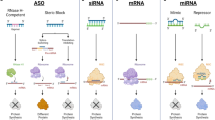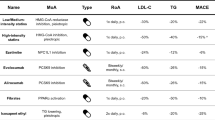Abstract
Hyperhomocysteinemia, a well-known and independent risk factor for cardiovascular disease, has been related in several studies with psoriasis patients. It has been suggested that homocysteine leads to endothelial dysfunction by causing an accumulation of asymmetrical dimethyl arginine (ADMA), a potent endogenous nitric oxide (NO) synthase inhibitor of the l-arginine–NO pathway. However, limited data is available regarding the psoriasis and ADMA relationship. In this study, we aimed to investigate the serum levels of homocysteine, ADMA and other metabolites from the l-arginine–NO pathway in psoriasis patients. Forty-two patients with chronic plaque psoriasis and 48 controls were enrolled in the study. Serum homocysteine, ADMA, l-monomethyl-l-arginine (l-NMMA), symmetric dimethylarginine (SDMA) and l-arginine levels, and l-arginine/ADMA ratios of psoriasis patients and the control group were measured. The severity of psoriasis was assessed by the psoriasis area and severity index (PASI). The mean ADMA and homocysteine values were significantly higher, and citrulline and l-arginine/ADMA values were significantly lower in psoriasis patients compared to control subjects. However, there were no significant differences among the patient and control groups with respect to mean SDMA, l-NMMA and l-arginine values. PASI scores strongly correlated with the ADMA level and moderately correlated with l-arginine/ADMA ratio. This study suggests that the l-arginine–NO pathway metabolites, especially ADMA, may play an important role in the pathogenesis of psoriasis. Additionally, serum ADMA levels of psoriasis patients may be an indicator of the disease severity.

Similar content being viewed by others
References
Abeyakirthi S, Mowbray M, Bredenkamp N et al (2010) Arginase is overactive in psoriatic skin. Br J Dermatol 163:193–196
Angel K, Provan SA, Mowinckel P et al (2012) The l-arginine/asymmetric dimethylarginine ratio is improved by anti-tumor necrosis factor-α therapy in inflammatory arthropathies. Associations with aortic stiffness. Atherosclerosis 225:160–165
Atzeni F, Sarzi-Puttini P, Sitia S et al (2011) Coronary flow reserve and asymmetric dimethylarginine levels: new measurements for identifying subclinical atherosclerosis in patients with psoriatic arthritis. J Rheumatol 38:1661–1664
Atzeni F, Turiel M, Boccassini L et al (2011) Cardiovascular involvement in psoriatic arthritis. Reumatismo 63:148–154
Bełtowski J, Kedra A (2006) Asymmetric dimethylarginine (ADMA) as a target for pharmacotherapy. Pharmacol Rep 58:159–178
Brazzelli V, Grasso V, Fornara L et al (2010) Homocysteine, vitamin B12 and folic acid levels in psoriatic patients and correlation with disease severity. Int J Immunopathol Pharmacol 23:911–916
Bruch-Gerharz D, Schnorr O, Suschek C et al (2003) Arginase 1 overexpression in psoriasis: limitation of inducible nitric oxide synthase activity as a molecular mechanism for keratinocyte hyperproliferation. Am J Pathol 162:203–211
Cakmak SK, Gül U, Kiliç C et al (2009) Homocysteine, vitamin B12 and folic acid levels in psoriasis patients. J Eur Acad Dermatol Venereol 23:300–303
Di Gangi IM, Chiandetti L, Gucciardi A et al (2010) Simultaneous quantitative determination of N(G), N(G)-dimethyl-l-arginine or asymmetric dimethylarginine and related pathway’s metabolites in biological fluids by ultrahigh-performance liquid chromatography/electrospray ionization-tandem mass spectrometry. Anal Chim Acta 677:140–148
El-Mongy Fathy H, Abdelaziz A et al (2010) Subclinical atherosclerosis in patients with chronic psoriasis: a potential association. JEADV 24:661–666
Erturan I, Köroğlu BK, Adiloğlu A et al (2014) Evaluation of serum sCD40L and homocysteine levels with subclinical atherosclerosis indicators in patients with psoriasis: a pilot study. Int J Dermatol 53:503–509
Krischel V, Bruch-Gerharz D, Suschek C et al (1998) Biphasic effect of exogenous nitric oxide on proliferation and differentiation in skin derived keratinocytes but not fibroblasts. J Invest Dermatol 111:286–291
Lentz SR, Rodionov RN, Dayal S (2003) Hyperhomocysteinemia, endothelial dysfunction, and cardiovascular risk: the potential role of ADMA. Atheroscler Suppl 4:61–65
Liew SC, Das-Gupta E, Wong SF et al (2012) Association of methylentetraydrofolate reductase (MTHFR) 677 C>T gene polymorphism and homocysteine levels in psoriasis vulgaris patients from Malaysia: a case-control study. Nutr J 11:1
Malerba M, Gisondi P, Radaeli A et al (2006) Plasma homocysteine and folate levels in patients with chronic plaque psoriasis. Br J Dermatol 155:1165–1169
McDonald CJ, Calabresi P (1973) Thromboembolic disorders associated with psoriasis. Arch Dermatol 107:918
McDonald I, Connolly M, Tobin AM (2012) A review of psoriasis, a known risk factor for cardiovascular disease and its impact on folate and homocysteine metabolism. J Nutr Metab 2012:965385
Nadar S, Blann AD, Lip GY (2004) Endothelial dysfunction: methods of assessment and application to hypertension. Curr Pharm Des 10:3591–3605
Naldi L, Mercuri SR (2010) Epidemiology of comorbidities in psoriasis. Dermatol Ther 23:114–118
Ormerod AD, Copeland P, Shah SA (2000) Treatment of psoriasis with topical NG-monomethyl-l-arginine, an inhibitor of nitric oxide synthesis. Br J Dermatol 142:985–990
Ozdemir O, Yakut A, Dinleyici EC (2011) Serum asymmetric dimethylarginine (ADMA), homocysteine, vitamin B(12), folate levels, and lipid profiles in epileptic children treated with valproic acid. Eur J Pediatr 170:873–877
Palomo I, Contreras A, Alarcón LM et al (2011) Elevated concentration of asymmetric dimethylarginine (ADMA) in individuals with metabolic syndrome. Nitric Oxide 24:224–228
Stanger O, Herrmann W, Pietrzik K et al (2003) DACH-LIGA Homocystein e.V. DACH-LIGA homocystein (German, Austrian and Swiss homocysteine society): consensus paper on the rational clinical use of homocysteine, folic acid and B-vitamins in cardiovascular and thrombotic diseases: guidelines and recommendations. Clin Chem Lab Med 41:1392–1403
Stühlinger MC, Tsao PS, Her JH et al (2001) Homocysteine impairs the nitric oxide synthase pathway: role of asymmetric dimethylarginine. Circulation 104:2569–2575
Tobin AM, Hughes R, Hand EB et al (2011) Homocysteine status and cardiovascular risk factors in patients with psoriasis: a case-control study. Clin Exp Dermatol 36:19–23
Usta M, Yurdakul S, Aral H et al (2011) Vascular endothelial function assessed by a noninvasive ultrasound method and serum asymmetric dimethylarginine concentrations in mild-to-moderate plaque-type psoriatic patients. Clin Biochem 44:1080–1084
van der Zwan LP, Scheffer PG, Dekker JM et al (2011) Systemic inflammation is linked to low arginine and high ADMA plasma levels resulting in an unfavourable NOS substrate-to-inhibitor ratio: the Hoorn study. Clin Sci (Lond) 121:71–78
van Guldener C, Nanayakkara PW, Stehouwer CD (2007) Homocysteine and asymmetric dimethylarginine (ADMA): biochemically linked but differently related to vascular disease in chronic kidney disease. Clin Chem Lab Med 45:1683–1687
Vanizor Kural B, Orem A, Cimşit G et al (2003) Plasma homocysteine and its relationships with atherothrombotic markers in psoriatic patients. Clin Chim Acta 332:23–30
Visser M, Paulus WJ, Vermeulen MA et al (2010) The role of asymmetric dimethylarginine and arginine in the failing heart and its vasculature. Eur J Heart Fail 12:1274–1281
Wang Tang WH, Cho L et al (2009) Targeted metabolomic evaluation of arginine methylation and cardiovascular risks: potential mechanisms beyond nitric oxide synthase inhibition. Arterioscler Thromb Vasc Biol 29:1383–1391
Acknowledgments
This study was supported by a grant from the Scientific Research Project Coordination Unit of Selcuk University (Project No: 13401128).
Conflict of interest
This report does not have any conflict of interest.
Author information
Authors and Affiliations
Corresponding author
Rights and permissions
About this article
Cite this article
Bilgiç, Ö., Altınyazar, H.C., Baran, H. et al. Serum homocysteine, asymmetric dimethyl arginine (ADMA) and other arginine–NO pathway metabolite levels in patients with psoriasis. Arch Dermatol Res 307, 439–444 (2015). https://doi.org/10.1007/s00403-015-1553-3
Received:
Revised:
Accepted:
Published:
Issue Date:
DOI: https://doi.org/10.1007/s00403-015-1553-3




